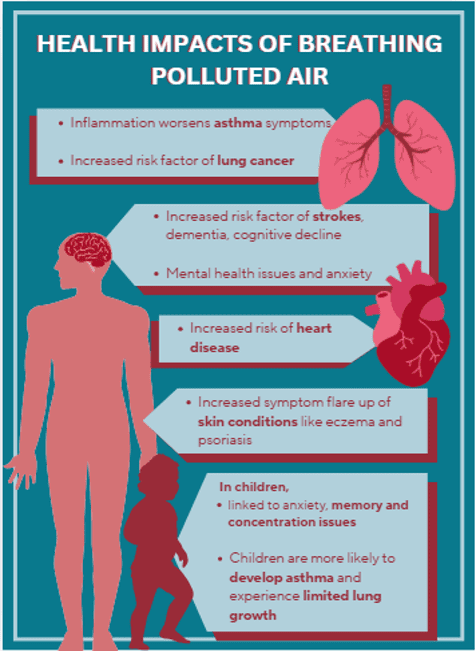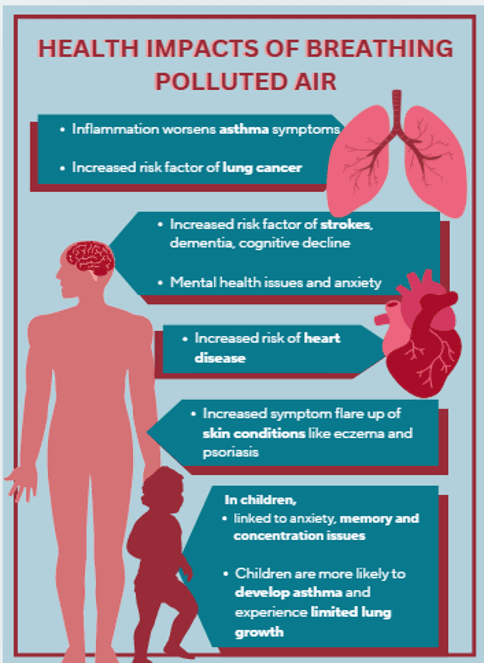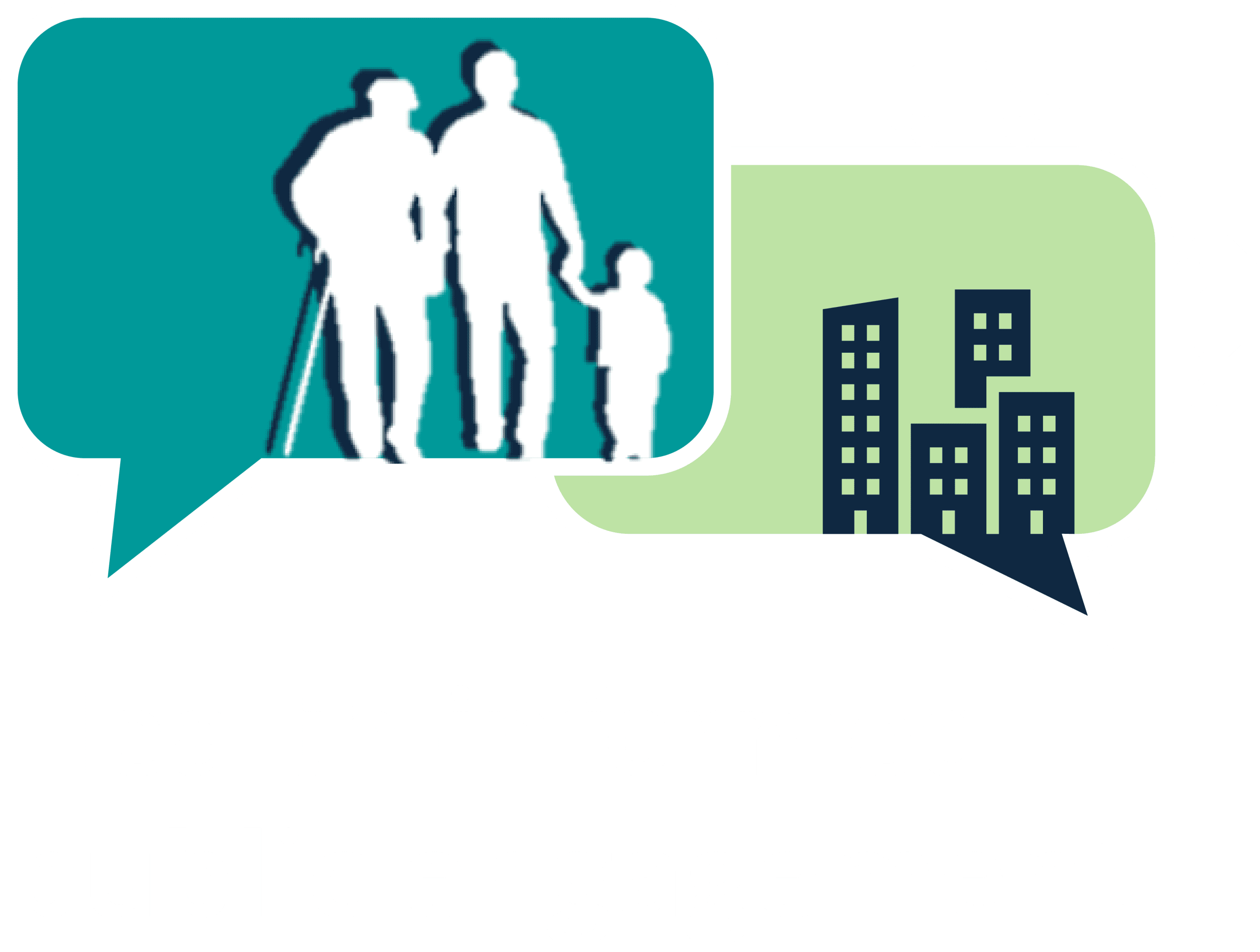6. Resources
In this section you can find:
- Useful links
- TRUUD Lived Experience films
- Final printed materials used in the test engagement event
6.1 USEFUL LINKS
- Frameworks UK – Resources and guidance on framing
Change the story. Change the world. – FrameWorks UK
- ‘The Wall of Beliefs’ toolkit for counter-disinformation – CGS Behavioural Science Team (2022)
https://gcs.civilservice.gov.uk/wp-content/uploads/2022/09/Wall_of_Beliefs_-publication.pdf
- ‘Community engagement: a health promotion guide for universal health coverage in the hands of the people’ WHO (2020
Community engagement: a health promotion guide for universal health coverage in the hands of the people
- ‘Inclusive Engagement Toolkit’
(QOLF)
Inclusive_Engagement_Tookit_Final.pdf.pdf
- Figures showing modifiable urban planning features and health outcomes, in ‘Built and natural environment planning principles for promoting health: an umbrella review’
(Bird, Ige, Pilkington, Pinto, Petrokofsky, Burgess-Allen, 2018)
https://truud.ac.uk/#!/up
Public engagement
https://truud.ac.uk/public-engagement/
Lived experience films (see also 6.2)
https://truud.ac.uk/living-in-unhealthy-places/
Resources for integrating health into urban development
https://truud.ac.uk/cmi-resources/
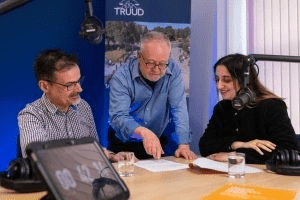
Podcasts
Dr Andy Gibson, TRUUD Public Involvement team Lead, and Miriam Khan, member of the TRUUD Public Advisory Group (PAG) at their Podcast recording ‘Involving People’
6.2 TRUUD LIVED EXPERIENCE FILMS
NB. ALL OF THESE FILMS CAN BE SHARED AND DOWNLOADED AND USED IN ENGAGEMENT AND OTHER PUBLIC EVENTS
‘Living in unhealthy places’
The TRUUD Public Involvement Team at UWE Bristol commissioned a set of three short films to show the different ways in which urban built environments can impact health. Four families describe how their lives are affected by overcrowding and lack of public/green space, noise pollution and mould, and indicate what differences changes could make to help alleviate these risks.
The focus of the short films was chosen based on evidence from TRUUD’s wider work.
The films demonstrate the value of using lay knowledge in co-produced creative outputs to aid understanding of the multiple physical and mental health impacts of the built environment. They were used in TRUUD’s changing mindsets and national government interventions and for informed discussions with the public sector, industry and other stakeholders. See the TRUUD website.
Short films such as these can both increase understanding and prompt emotional responses and empathy. They form an important part of narrative qualitative evidence.
Samuel and his two sons talk about experiences and impacts of living in a cramped one-bedroom flat on the 15th floor of a high-rise with limited outdoor space in a TRUUD short film
Shakur talks about the impacts of of noise and air pollution from traffic on his family’s health and wellbeing in a TRUUD short film
Kadra and Wendy describe raising their children and managing their lives while living damp homes in a TRUUD short film “I feel stressed in this house”
‘It’s life or death sometimes’: family journeys to school
As part of our work exploring how lay knowledge, and health data can be integrated to introduce discussions around the need for changes and improvements to streets, we commissioned a fourth film in Spring 2025.
The film follows three families on their daily journey to school, showing the impacts of traffic pollution and safety concerns, as parents and children navigate polluted, busy and chaotic streets under some stress.
This film was tested at the OSOH test engagement event, outlined in Section 4.
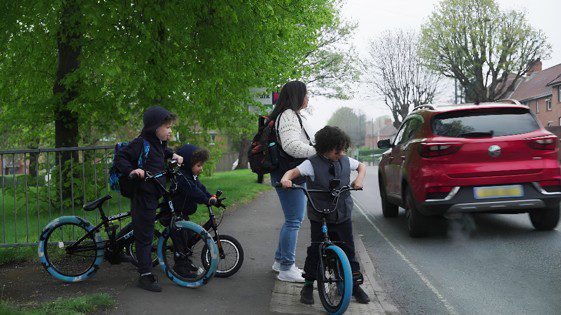
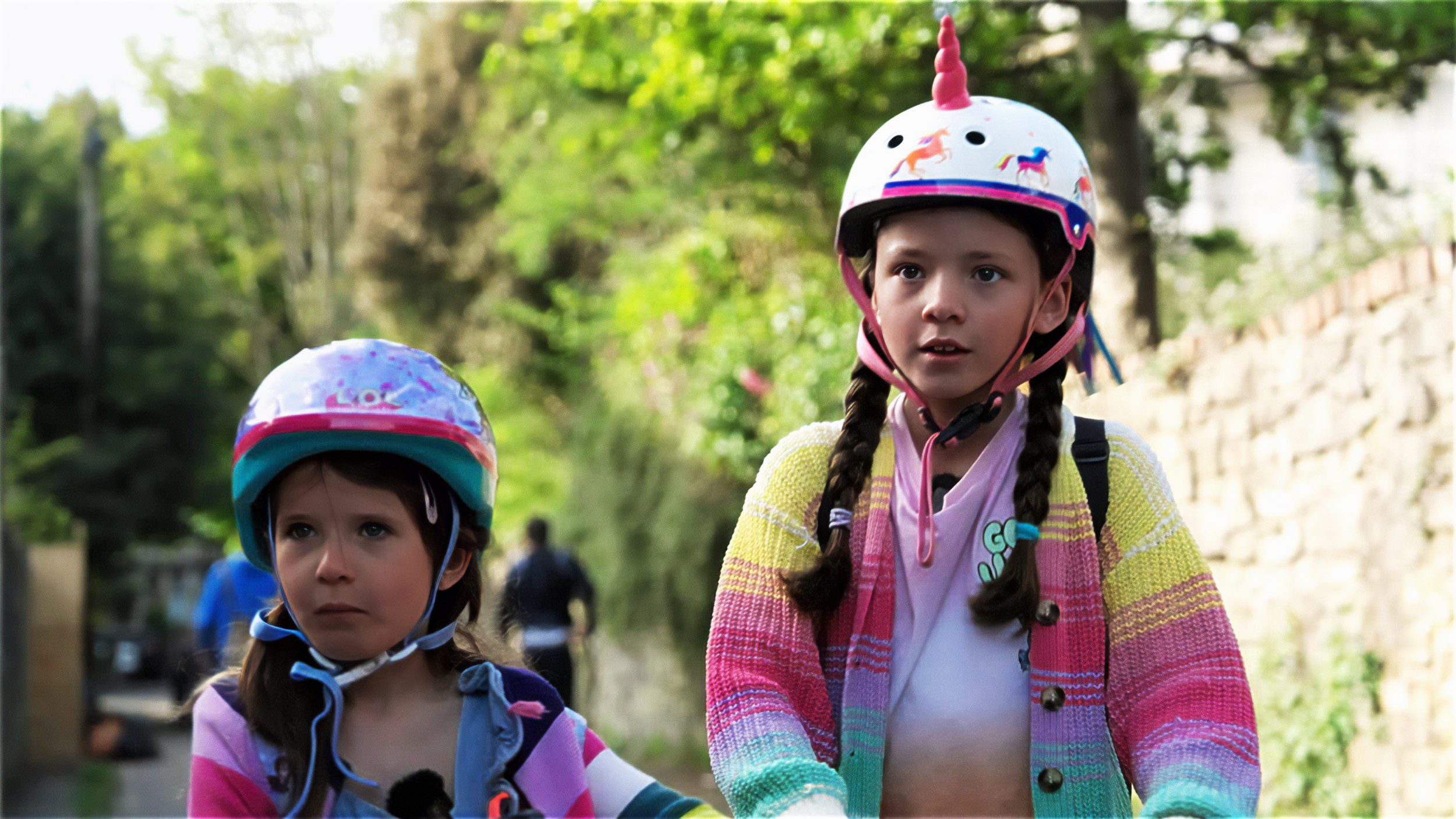
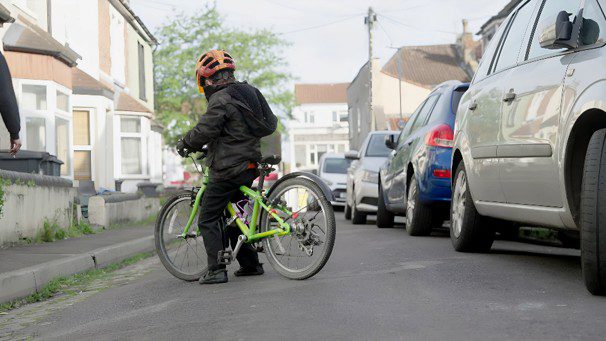
6.3 MATERIALS USED AT PUBLIC ENGAGEMENT TEST EVENT ‘OUR STREETS OUR HEALTH’
NB. THESE MATERIALS CAN BE USED ON REQUEST
DEFINITION OF STREETS
A sheet was distributed which had a definition of streets and example images.
References for the images were included on the back of the sheet.
‘Streets are the public spaces everyone can access that connect the places we live, work, and move in and through.
They include pavements, roads, the outside of buildings (shopfronts, fronts of houses), and the things people interact with such as benches, trees, crossings.’
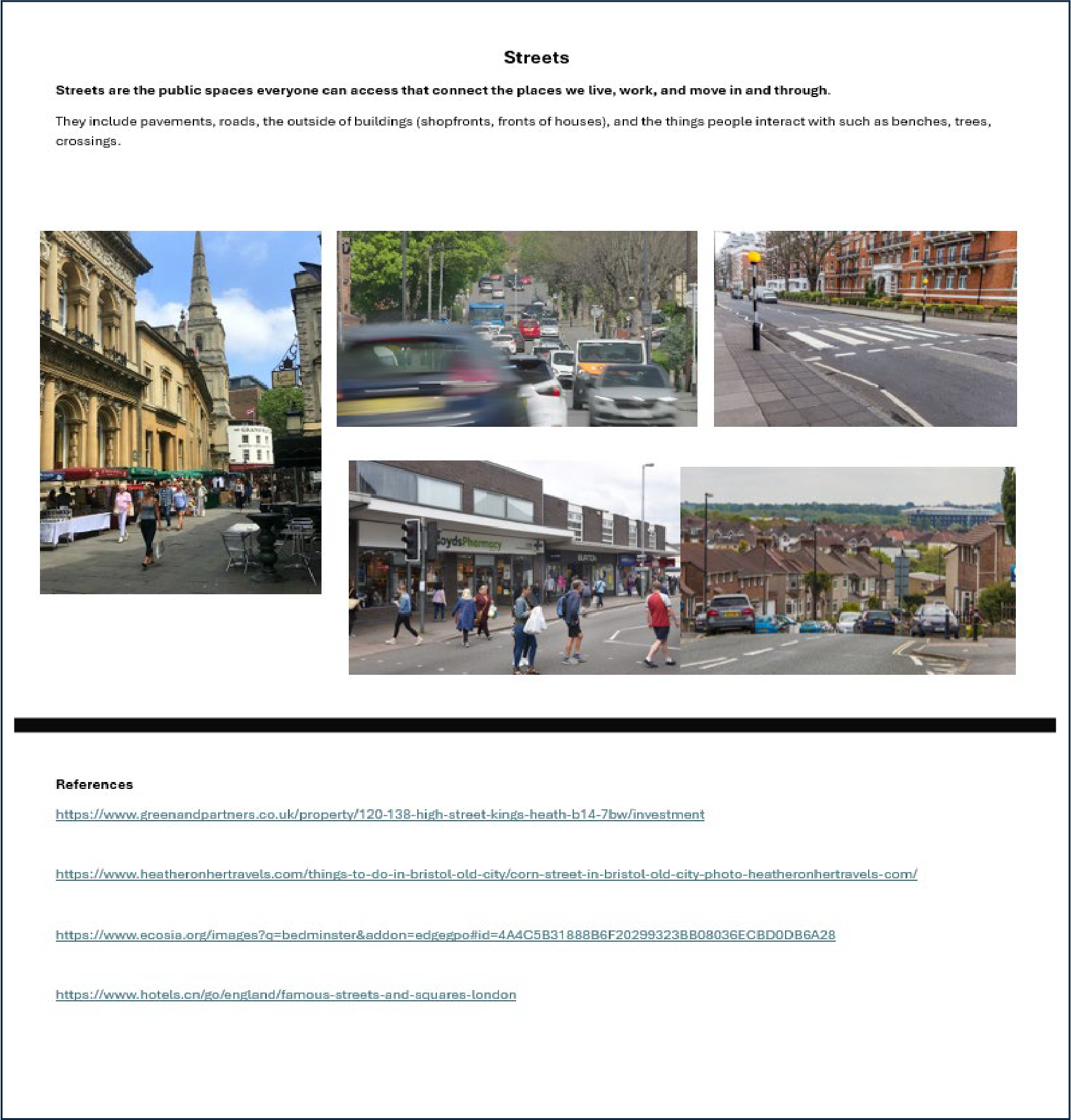
PRINTED LEAFLETS
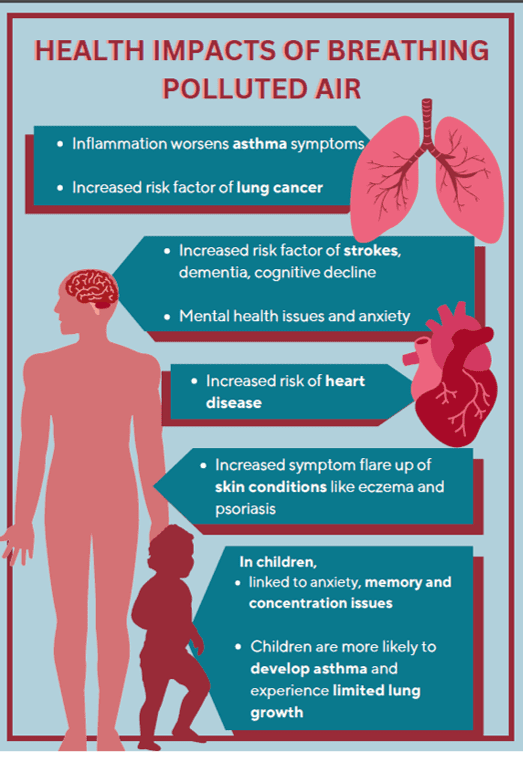
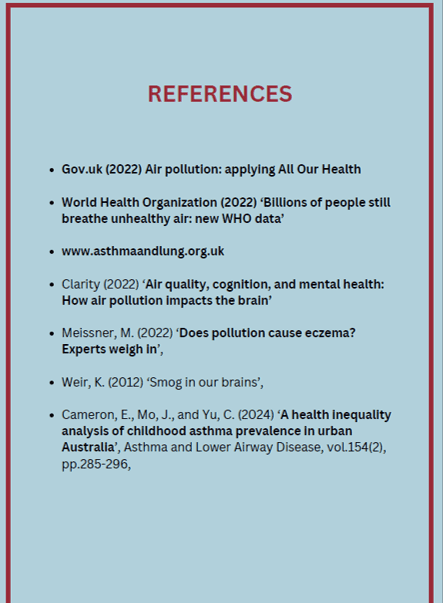
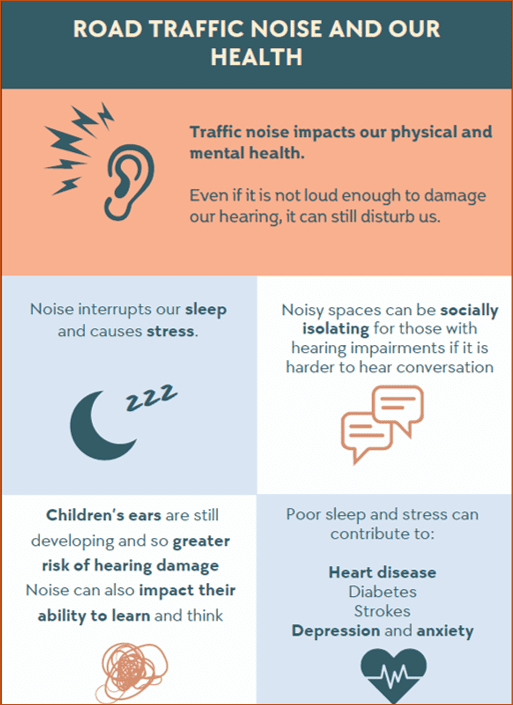
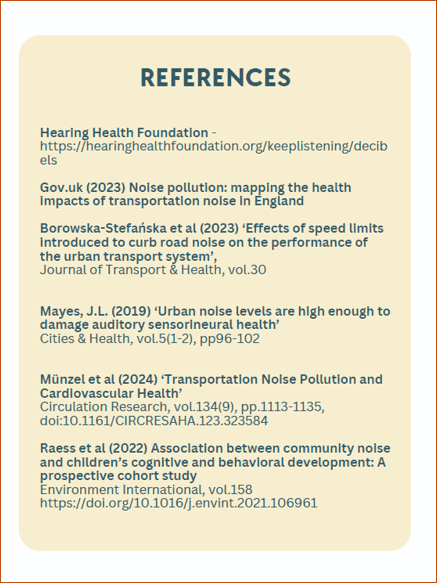
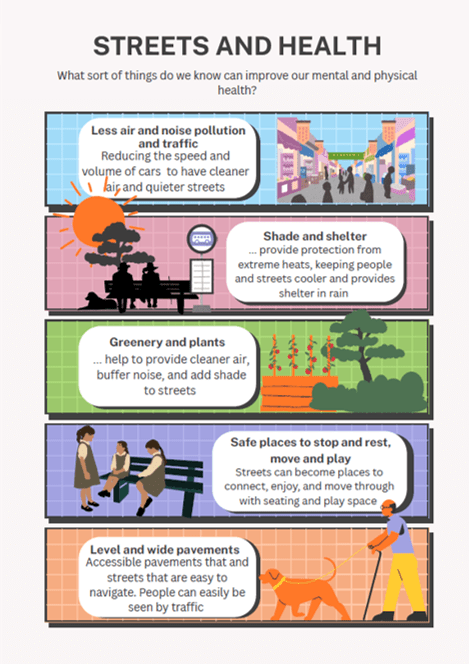
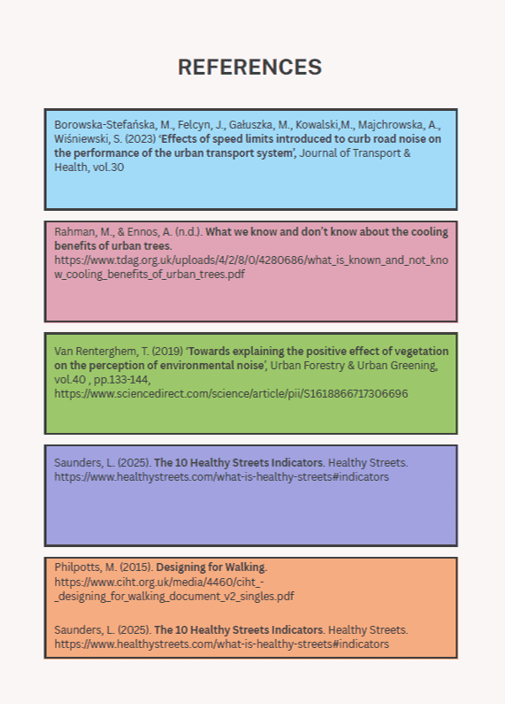

◀
Air Pollution poster with references


◀
Noise Pollution poster with references


Streets and Health poster with references

SHORT FILM: “It’s life or death sometimes”: family journeys to school
Following the screening participants were given a sheet of stills from the short film to help prompt discussion.
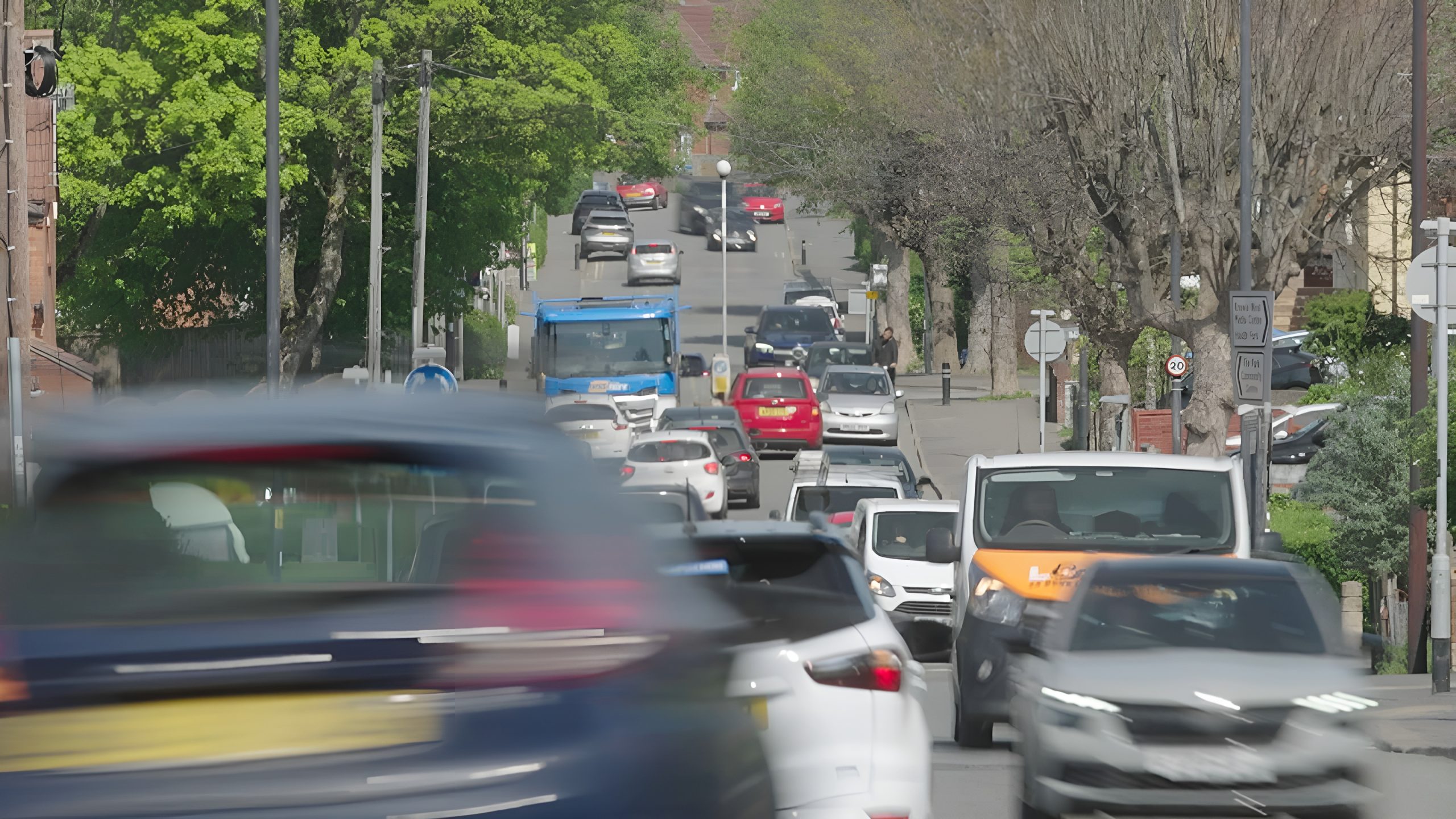

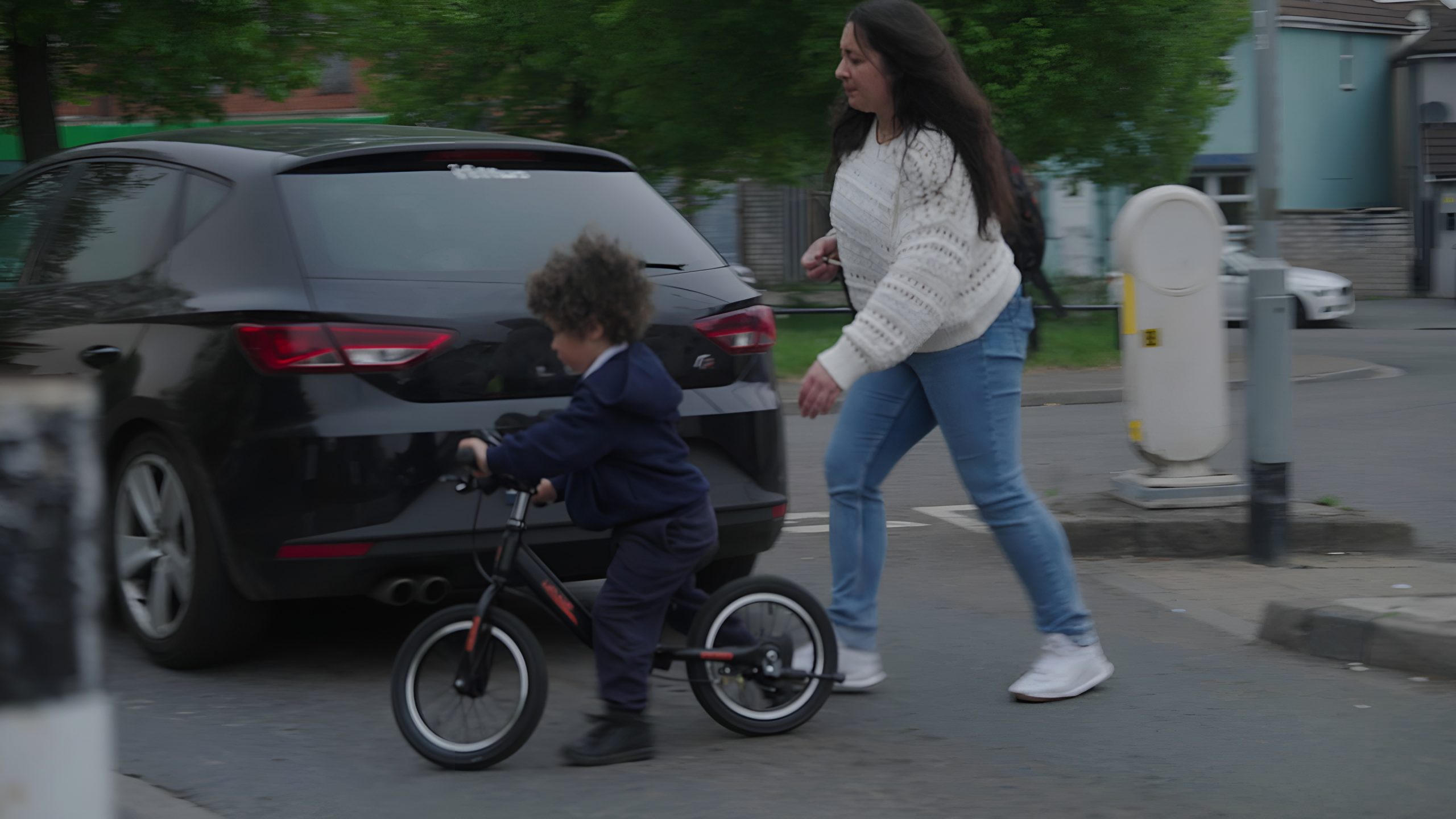
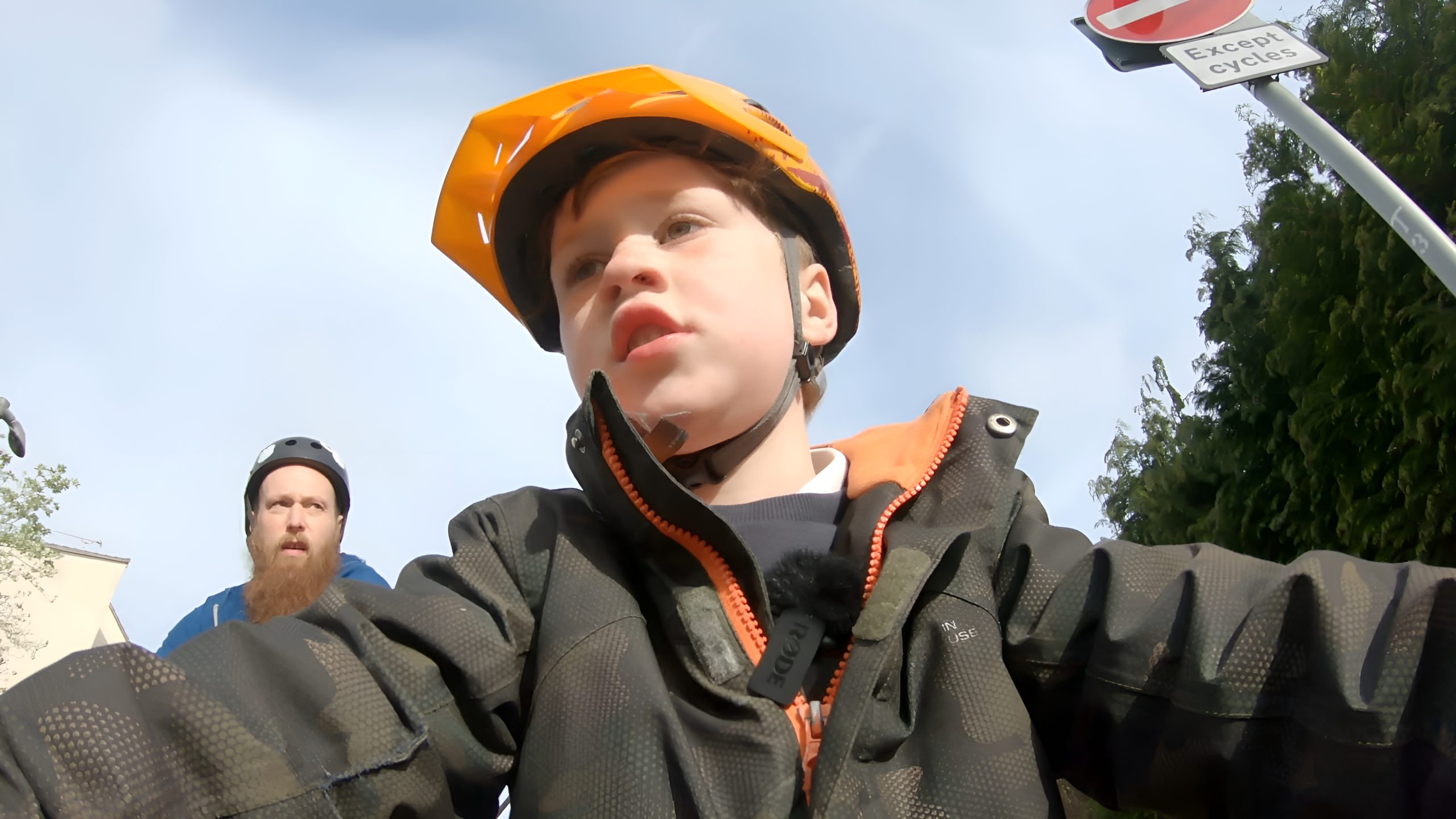
Funding statement
Our partners






Funding statement
This work was supported by the UK Prevention Research Partnership (award reference: MR/5037586/1), which is funded by the British Heart Foundation, Cancer Research UK, Chief Scientist Office of the Scottish Government Health and Social Care Directorates, Engineering and Physical Sciences Research Council, Economic and Social Research Council, Health and Social Care Research and Research and Development Division (Welsh Government), Medical Research Council, National Institute for Health Research, Natural Environment Research Council, Public Health Agency (Northern Ireland), The Health Foundation and Wellcome.
Our partners






Appendix A: LTNS INCLUDED IN GREY LITERATURE REVIEW
- Bath and North East Somerset
- Chelsea Road Liveable Neighbourhood
- Church Street and Prior Park Liveable Neighbourhood
- Entry Hill Liveable Neighbourhood
- Whitchurch Village and Queen Charlton
- Liveable Neighbourhood
- Egerton Road and Cotswold Road Liveable Neighbourhood
- Lower Lansdown and The Circus Area Liveable Neighbourhood
- Lyme Road and Charmouth Road Liveable Neighbourhood
- New Sydney Place and Sydney Road Liveable Neighbourhood
- Pultney Estate Area Liveable Neighbourhood
- Temple Cloud Liveable Neighbourhood
- Southlands Area Liveable Neighbourhood
- Bournemouth, Christchurch and Poole Council
- Whitecliff Road ETRO
- Tatnum Road ETRO
- Bird’s Hill ETRO
- Birmingham City Council
- Kings Heath Low Traffic Neighbourhood
- Bristol City Council
- Southville Home Zone
- South Bristol Liveable Neighbourhoods
- East Bristol Liveable Neighbourhood
- Cardiff City Council
- Plasnewydd Active Travel Network
- Exeter, Devon County Council
- Heavitree and Whipton Active Streets Trial
- Ipswich, Suffolk County Council
- Westbury and Leopold Roads TROs
- Leeds City Council
- Hyde Park Active Travel Neighbourhood
- Leicester City Council
- Evington Safer Streets Healthier Neighbourhood
- London (various borough councils)
- West Dulwich Street Improvements, Lambeth
- South Leytonstone LTN, Waltham Forest
- Lewisham and Lee Green Safer Streets, Lewisham
- Edmorton Green Quieter Neighbourhood, Enfield
- Bowes Quieter Neighbourhood, Enfield
- Oval/ Stockwell LTN, Lambeth
- Railton LTN, Lambeth
- Ferndale LTN, Lambeth
- Tulse Hill LTN, Lambeth
- Streatham Hill LTN, Lambeth
- Streatham Wells LTN, Lambeth
- Brixton Liveable Neighbourhood, Lambeth
- Brixton Hill LTN, Lambeth
- Slade Gardens LTN, Lambeth
- Stockwell Gardens, Lambeth
- Southwark Healthy Streets, Southwark
- Greater Manchester Combined Authority
- Parsonage Road Safer Streets, Withington
- Levenshulme and Burnage Active Travel Neighbourhood
- Oxford, Oxfordshire County Council
- East Oxford Low Traffic Neighbourhood
- Portsmouth Council
- Active Pompey Neighbourhood
- Salford City Council
- Trinity and Islington ETROs
- Sheffield City Council
- Crookes and Walkley Active Neighbourhood
- Southampton City Council
- St Deny’s Active Travel Zone
- Weston Super Mare (North Somerset Council)
- Weston Central Liveable Neighbourhood
- Wigan Council
- Worsley Mesnes Active Neighbourhood
- City of York Council
- Groves Low Traffic Neighbourhood
Appendix B: DEVELOPMENT OF PRINTED MATERIALS FOR TEST PUBLIC ENGAGEMENT EVENT
Our secondary research had identified a range of health impacts of air pollution and we worked with members of the TRUUD Public Advisory Group (PAG) to identify the best ways of presenting this information.
The PAG were involved in choosing which evidence-linked statements were most effective and how best to word them so they were accessible to the general public. The PAG also provided feedback on the visual design of the materials.
Here we share details on the different versions of the poster on air pollution and how these were revised as we developed our plans for our test event where they would be used (See Section 4).
The initial poster was 2-sided and included both general/national and local data relevant to air pollution and health. We decided to remove the local data to focus on the wider physical and mental health impacts on people more generally.

We also removed details on WHO guideline breaches given the difference between legal pollution levels and staggered targets in the UK and safe pollution levels as defined by WHO. While these are important and relevant they could be used as part of a wider information and communication campaign.
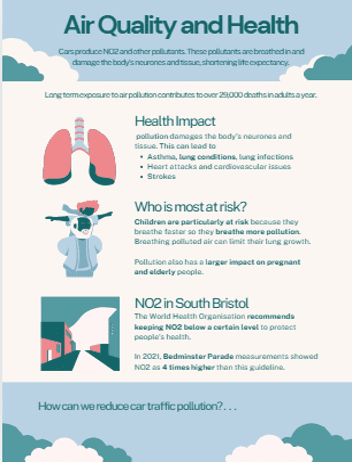
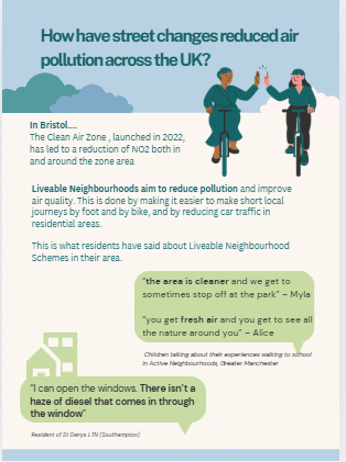
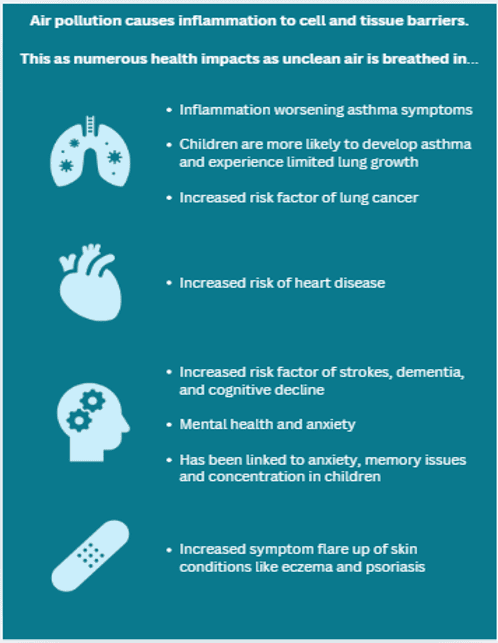
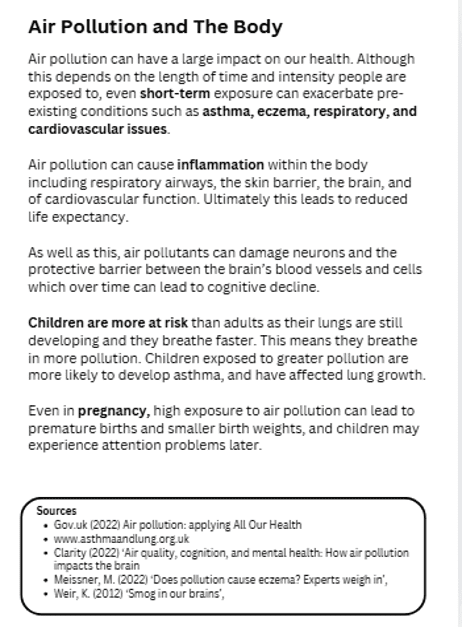

We then explored the potential of having both a short and longer summary as a two-sided poster. We established that we could condense key information into short sentences which informed our near-final design.
Having now selected the key information we wanted to present the design was revised to visually represent which parts of the body are affected by air pollution, using icons and labels. We began with the colour shading on the lefthand poster, but decided it was too dark and switched to the lighter version on the righthand image.

The reverse side of the poster was used for references.
Our final outputs exemplify how quite simple printed materials can be co-designed with the public to help convey the multiple health impacts of factors related to the built environment in which we live, such as air pollution. These resources were low-cost, involving the time spent by researchers collecting details on evidence, a series of meetings between researchers and PAG members (with PAG members paid £25 p/hour for their time) and limited printing/photocopying costs.
